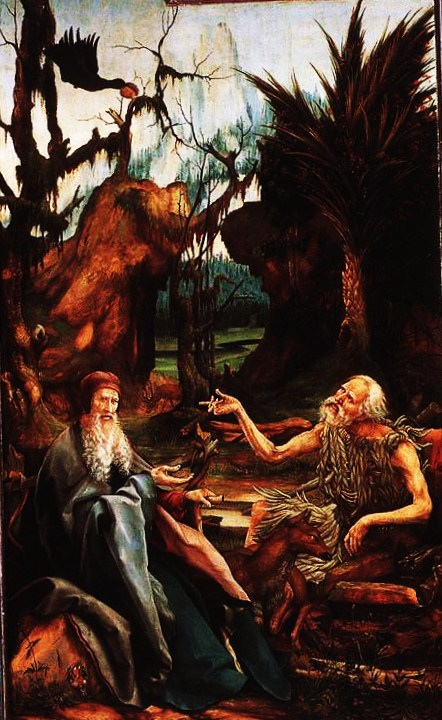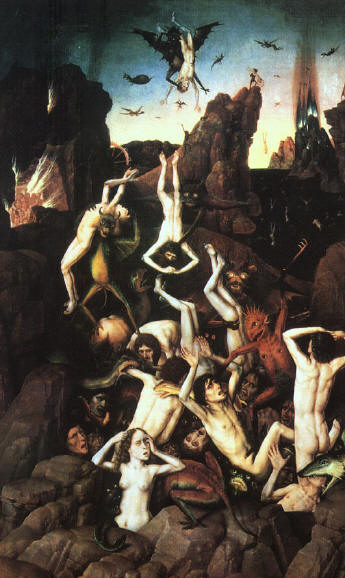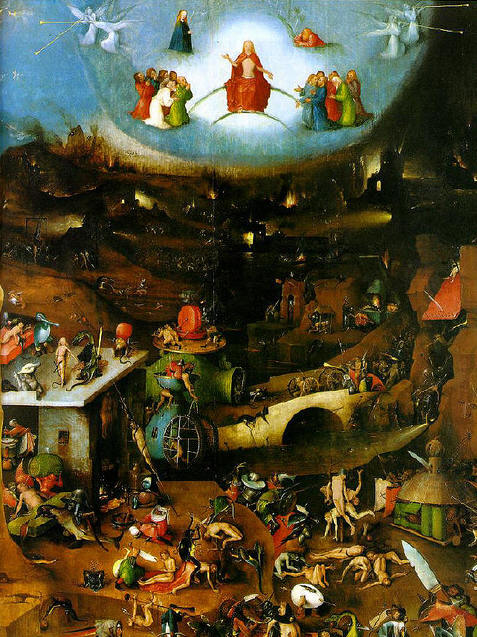As mentioned in the last blog post "Medieval artists strove for realism; churches and monasteries were covered in inscriptions, paintings and sculptures that portrayed biblical scenes or saints." [1] Death in this time was not to be feared but rather revered as the natural passage between ones time on earth and their future in the afterlife. The Black Death introduced a new much harsher reality to art. The paintings below are a prime example of the new reality of art.
The big question is not only how but why did the art change from grandiose images to a more macabre fascination with death? Well it can be argued that it all changed with the change in attitudes towards the Church. The Church's inability to prevent the spread of the plague and its monetary growth during this time (presumably due to donations from the sick and dying) led many to turn their backs on the Church - "the loss of esteem for the Church." [4] There are a few other theories that would align with the loss of esteem for the Church. The noble, the clergy, and the wealthy were not untouched by the plague; it didn't matter the social standing of the individual, all exposed died.
(left to right: The Fall of the Damned - 1620, The Last Judgement - 1505, The Temptation of St, Anthony - 1510-1513)
Although the images above are at least one hundred years past the Black Death they clearly show the changes in society that was mentioned above. E.L. Skip Knox from Boise State University would define these images as a part of the danse macabre:
Although it won't be covered in my blog, I think it's necessary to point out that the Black Death not only had an impact on paintings. Architecture including gravestones and tombs were also affected during this transition into realism. I think it's important to note this during my research as it may lead to some more clues on how society reacted to death and dying both during and after the Black Death. [6]
[1] "The Influence of Plague on Art from the Late 14th to the 17th Century ." MSU Entomology Group. http://entomology.montana.edu/historybug/YersiniaEssays/Medrano.htm (accessed September 27, 2013).
[2] "The Black Death Theory of Art: Examples of a Harsh New Reality?." The Catholic University of America. faculty.cua.edu/pennington/churchhistory220/lectureten/blackdeath/Art%20Page%202.htm (accessed September 27, 2013).
[3] "The Black Death Theory of Art"
[4] "The Black Death." Utah State University . www.usu.edu/markdamen/1320Hist&Civ/PP/slides/06blackdeath.pdf (accessed September 27, 2013).
[5] Knox, E.L Skip. "The Black Death." History Sites by Knox. http://europeanhistory.boisestate.edu/westciv/plague/19.shtml (accessed September 27, 2013).
[6] "The Influence of Plague on Art from the Late 14th to the 17th Century ."







